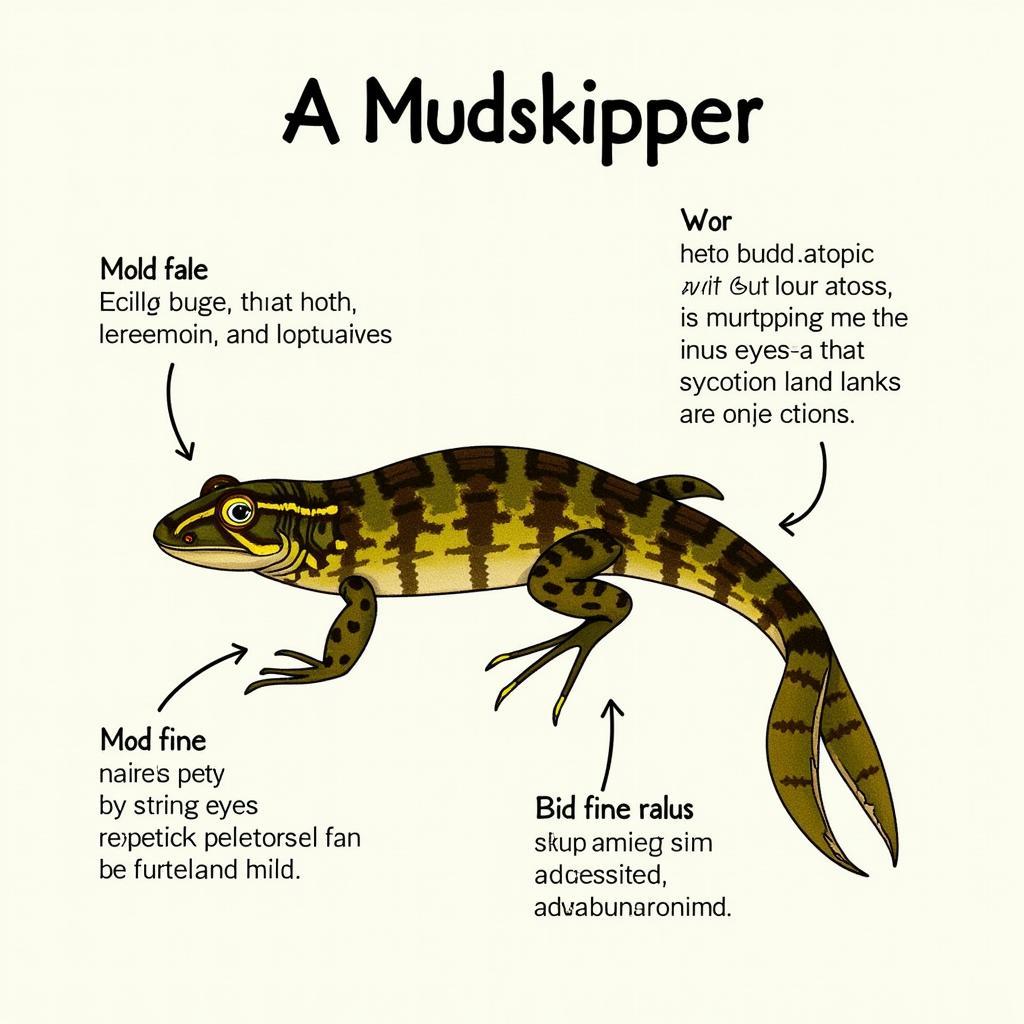Cá Kèo In English is most commonly translated as “mudskipper.” This guide will delve into the fascinating world of these amphibious fish, exploring their unique characteristics, habitat, and cultural significance.
cá kèo trong tiếng anh Mudskippers are remarkable creatures, capable of thriving both in and out of water. They are found in mangrove forests, mudflats, and other intertidal zones throughout tropical, subtropical, and temperate regions. These unique adaptations allow them to navigate their challenging environment and access food sources unavailable to other fish.
Understanding “Cá Kèo” and its English Equivalent
The Vietnamese term “cá kèo” specifically refers to the species Boleophthalmus boddarti, a type of mudskipper commonly found in Southeast Asia, particularly in Vietnam. While “mudskipper” accurately describes the general category, understanding the specific species is crucial for scientific accuracy. Other species of mudskippers exist globally, each with unique features and adaptations.
Why is Knowing the Correct Term Important?
Knowing the precise English equivalent of “cá kèo” is crucial for several reasons. For researchers and scientists, using the correct terminology is paramount for accurate communication and collaboration. For those interested in culinary uses, understanding the specific species is important for finding recipes and understanding preparation methods. Furthermore, knowing the correct term helps travelers and tourists appreciate the local culture and communicate effectively with locals.
The Unique World of Mudskippers
Mudskippers have evolved remarkable adaptations to their amphibious lifestyle. Their modified pectoral fins act as rudimentary legs, allowing them to “walk” and even skip across mudflats. Their bulging eyes provide excellent vision both above and below water, enabling them to spot prey and predators. Furthermore, specialized gill chambers retain water, allowing them to breathe even when out of the water.
Adaptations for Survival
Mudskippers are truly remarkable creatures, capable of breathing air and surviving out of water for extended periods. This allows them to forage for food on land, including insects, crustaceans, and even small crabs. Their skin, while moist, is also adapted to prevent excessive water loss in the air.
cá kèo english These fascinating creatures play a crucial role in the mangrove ecosystem, contributing to nutrient cycling and serving as both predator and prey. Their presence is a sign of a healthy and thriving mangrove environment.
 Close-up view of a Mudskipper's anatomy
Close-up view of a Mudskipper's anatomy
Cá Kèo in Vietnamese Cuisine
In Vietnam, “cá kèo” is a popular delicacy, especially in the southern regions. It’s known for its unique flavor and texture, often described as slightly sweet and delicate.
Popular Cá Kèo Dishes
Several popular dishes feature “cá kèo,” including “cá kèo kho tộ” (caramelized fish in clay pot) and “cháo cá kèo” (fish porridge). These dishes highlight the unique flavors of the fish and showcase the versatility of Vietnamese cuisine.
cá kèo tiếng anh Understanding the culinary significance of “cá kèo” offers a deeper appreciation for Vietnamese culture and its connection to the natural world. It’s more than just a fish; it’s a symbol of local traditions and culinary ingenuity.
Conclusion
“Cá kèo in English” translates to “mudskipper,” but truly understanding this fascinating fish requires a deeper dive into its biology, habitat, and cultural significance. From its unique adaptations to its role in Vietnamese cuisine, the mudskipper is a remarkable creature worthy of our attention and appreciation.
FAQs
-
What is the scientific name for “cá kèo”? Boleophthalmus boddarti
-
Where are mudskippers found? Mangrove forests, mudflats, and intertidal zones.
-
What do mudskippers eat? Insects, crustaceans, and small crabs.
-
How do mudskippers breathe out of water? They use specialized gill chambers that retain water.
-
What is a popular Vietnamese dish made with “cá kèo”? “Cá kèo kho tộ” (caramelized fish in clay pot).
-
Are all mudskippers the same species as “cá kèo”? No, “cá kèo” refers to a specific species, while “mudskipper” is a broader term.
-
Why are mudskippers important to the ecosystem? They play a crucial role in nutrient cycling.
Khi cần hỗ trợ hãy liên hệ Số Điện Thoại: 0938844703, Email: [email protected] Hoặc đến địa chỉ: 227-229 Đ. Số 1, Bình Trị Đông B, Bình Tân, Hồ Chí Minh, Việt Nam. Chúng tôi có đội ngũ chăm sóc khách hàng 24/7.